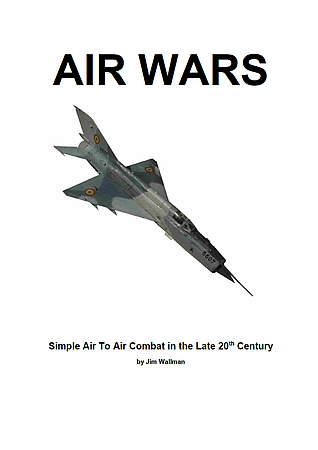
Air Wars
To keep the game simple, much of the fine detail of air combat technology has been left out. Modern air combat is highly technical, but there is insufficient hard evidence to suggest the precise relative position of technology and pilot skill. Most writers on the subject are at pains to point out that the pilot's skill is still a significant factor, and it the skill of the player, rather than the technology that I have tried to emphasis here. Obviously, technology cannot be ignored, and in most cases I have tried to reflect the main differences in generic types of weapons and aircraft. Feel
free to tinker if such detail that is available is insufficient for you.
The rules have designed with the wars of the 1960s and 1970s specifically in mind. They therefore exclude some of the more spectacular weapons developments of recent years.
The game is mainly 2-dimensional, although there is a simplified height-band system to represent general operating heights. A fully implemented 3-D system would be much more complex to operate, and a lot slower in play, and for that
reason has not been provided here.
– Air Wars introduction
- Designer
- Jim Wallman
- Year Published
- 1989
- Status
- In Print
- Contents
- Available online (18-page PDF)
Back to RULES DIRECTORY
Areas of InterestModern
Featured Hobby News Article
Featured Link
Featured Ruleset
Featured Showcase Article Looking for an armored car with some punch?
Featured Profile Article
Current Poll
|
Please sign in to your membership account, or, if you are not yet a member, please sign up for your free membership account.
Simple Air To Air Combat in the Late 20th Century
Editions
Last revised 2008. Supplements
MIGCAP - The Air Wars Campaign Game
This campaign game is loosely based on the air war over North Vietnam during 1965-68. It is simplified (as are the rules) but offers some slight flavour of the air to air battles.
The campaign uses the Air Wars rules but in an unconventional 'back to back' setup. It requires at least two umpires, one North Vietnamese Air Force (NVAF) player and 3 or more US players.
– MIGCAP introduction
11-page PDF
|











